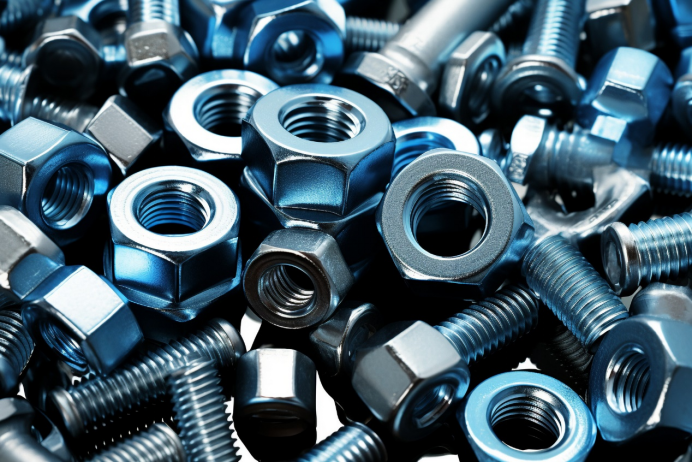

Installing Self-Tapping Screws in Wooden Materials for Secure Fastening Solutions
Th10 . 16, 2024 23:15 Back to list
Installing Self-Tapping Screws in Wooden Materials for Secure Fastening Solutions
A Comprehensive Guide to Self-Tapping Screws in Wood
Self-tapping screws are a popular choice for fastening materials without the need for pre-drilling holes. When it comes to woodworking, they provide a practical solution, ensuring strength and durability in various applications. This article will explore the features of self-tapping screws, their advantages, best practices for installation, and safety considerations.
What are Self-Tapping Screws?
Self-tapping screws are designed with a sharp, pointed tip and a thread that extends down the entire length of the screw. This design allows them to create their own hole as they are driven into the material. For woodworkers, self-tapping screws can save time and effort, making them invaluable in both DIY projects and professional applications.
The two main types of self-tapping screws are thread-forming and thread-cutting screws. Thread-forming screws displace material to form threads without removing material, ideal for softer woods. On the other hand, thread-cutting screws remove material as they are driven in, making them suitable for harder woods or composite materials.
Advantages of Self-Tapping Screws in Wood
1. Efficiency The most significant advantage of using self-tapping screws in wood is speed. As they eliminate the need for drilling pilot holes, they allow for quicker assembly, particularly in production environments or large projects.
2. Reduced Risk of Splitting When installed properly, self-tapping screws tend to minimize wood splitting. The sharp tip and design help the screw to enter the wood smoothly.
3. Strong Joint Self-tapping screws can provide a robust and reliable joint, especially when the correct screw length and thread type are chosen for the application.
4. Variety of Designs Available in numerous sizes, materials, and finishes, self-tapping screws can suit a wide range of needs and aesthetic requirements, aiding in both functional and visual aspects of woodworking.
Best Practices for Installation
To ensure optimal performance of self-tapping screws when fastening wood, follow these best practices
1. Choose the Right Screw Selecting the appropriate screw type, size, and length is critical. For example, longer screws offer better holding capacity, while shorter screws may be more suitable for thinner materials. It’s essential to match the screw thread design to the specific wood type being used.
self tapping screws into wood

2. Use Torque Control If you're using a power tool, ensure it has adjustable torque settings. This prevents over-tightening, which can strip the screw head or damage the wood.
3. Pre-drilling for Hardwoods While self-tapping screws eliminate the need for pilot holes in many cases, pre-drilling a hole can be beneficial in hardwoods or fragile materials. This reduces stress on the wood, preventing splitting while still allowing for easy installation.
4. Maintain a Straight Angle Drive the screw straight into the material to ensure maximum holding power. An angled screw can weaken the joint and may result in damage to the material.
5. Avoid Over-tightening Over-tightening can lead to damage to both the screw and the wood, affecting the structural integrity of the joint. Always test the screw’s engagement as you install it.
Safety Considerations
Safety should always be a priority when working with tools and materials. Here are some important safety tips to keep in mind while using self-tapping screws in wood
- Wear Protective Gear Always wear safety goggles to protect your eyes from flying debris and a dust mask to avoid inhaling wood dust.
- Keep Tools Maintained Ensure that all your tools, especially power tools, are in good working condition to prevent accidents.
- Work in a Well-Ventilated Area Good ventilation reduces the inhalation of dust and other particulates that can be harmful.
- Secure Your Workpiece Use clamps or a vice to secure the wood while working. This ensures better precision and reduces the risk of injury from slipping.
Conclusion
Self-tapping screws are an integral part of woodworking, offering efficiency and strength in fastening applications. By understanding their features, advantages, and best practices for installation, woodworkers can maximize their effectiveness. With careful attention to safety and proper technique, self-tapping screws can significantly enhance the quality and durability of woodworking projects. Whether you're a hobbyist or a professional, mastering the use of self-tapping screws will elevate your craft to new heights.
Latest news
-
Hot Dip Galvanized Bolts-About LongZe|High Strength, Corrosion Resistance
NewsJul.30,2025
-
High-Strength Hot Dip Galvanized Bolts - Hebei Longze | Corrosion Resistance, Customization
NewsJul.30,2025
-
Hot Dip Galvanized Bolts-Hebei Longze|Corrosion Resistance&High Strength
NewsJul.30,2025
-
High-Strength Hot-Dip Galvanized Bolts-Hebei Longze|Corrosion Resistance&High Strength
NewsJul.30,2025
-
Hot Dip Galvanized Bolts-Hebei Longze|Corrosion Resistance&High Strength
NewsJul.30,2025
-
Hot Dip Galvanized Bolts - Hebei Longze | Corrosion Resistance, High Strength
NewsJul.30,2025

